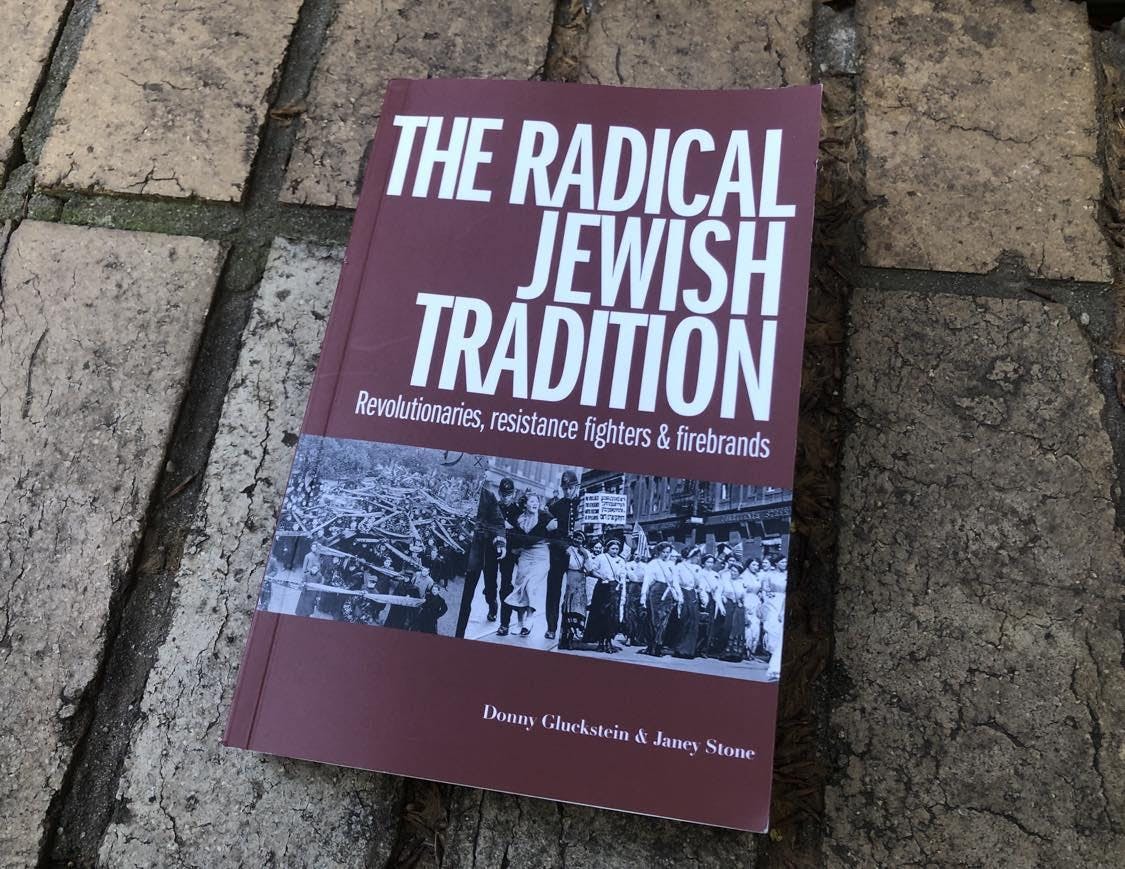Documenting Jewish radicalism

The Radical Jewish Tradition: Revolutionaries, Resistance Fighters and Firebrands
By Donny Gluckstein and Janey Stone
Interventions, 2024. 385 pages
As Israel lays waste to Gaza, an ideological battle rages over who can lay legitimate claim to Jewish identity and historical experience. So this excellent new work by Donny Gluckstein and Janey Stone—unapologetic Marxists, Jews and anti-Zionists—could hardly be timelier.
Zionism extols what Gluckstein and Stone refer to as the “lachrymose” (tearful) interpretation of Jewish history, according to which Jews meekly submitted to centuries of repression, only to find redemption through the establishment of Israel as a Jewish ethno-state. In contrast, Gluckstein and Stone uncover the radical Jewish tradition, which combated anti-Semitism with socialist politics and international working-class solidarity, encompassing Jews and non-Jews alike.
The spread of capitalism across Europe revolutionised social structures and political agencies. Confronted by an increasingly self-conscious working class, the capitalist class and its hangers-on came to rely on nationalism and racism to forge alternative political identities that did not threaten their rule.
This included using anti-Semitism to turn sections of the working class against each other, especially in eastern and central Europe. Gluckstein and Stone demonstrate how anti-Semitism was not innate among non-Jewish workers but was consciously promulgated by the ruling classes in a strategy of divide and rule. The result was pogroms, systematic discrimination and ultimately the Holocaust.
Anti-Semitism drew three main responses from the European Jewish community. First, liberal assimilationism emphasised political respectability and adaptation to locally dominant national cultures. Second, Zionism—Jewish nationalism—argued that anti-Semitism could not be defeated within Europe, and that Jews needed their own nation-state to protect their interests. These responses were popular among the minority of middle- and upper-class Jews.
But the majority of European Jews were workers. They confronted both the economic exploitation common to their class and the racism specifically directed at Jews. Only the socialist movement promised to eradicate the single underlying cause of this dual oppression: capitalism. Consequently, Jews played a disproportionately important role in the development of the socialist movement, both as leaders and among the rank and file.
Jewish socialists frequently clashed with conservative religious leaders, middle-class Jews who craved respectability, and Jewish factory owners who were happy to exploit their co-religionists—or occasionally refused to employ Jewish workers because they were too rebellious! These conflicts shattered the illusion of a unitary Jewish community.
Defying their impoverishment and political repression, working-class Jews again and again showed their fighting spirit. Stone and Gluckstein trace these stories of resistance from the ghettos of eastern Europe to the slums and sweatshops of New York and London’s East End. The class struggle encompassed consumer boycotts, rent strikes and above all unionisation and strikes. Jewish workers were in particular pioneers of the class struggle in the Russian empire, where they frequently made up a high proportion of the urban working class.
Socialists also organised resistance against anti-Semitism. Armed militias defended communities against pogroms in eastern Europe, while mass mobilisations drove back the British Union of Fascists in 1930s London. Even when unsuccessful, such actions developed political consciousness and self-respect among participants. A particularly moving chapter describes the heroic defiance of armed ghetto uprisings against the Nazis.
Gluckstein and Stone do not shy away from the political debates thrown up in the course of struggle. Some currents combined aspects of socialism with Jewish nationalism, resulting in so-called labour Zionism. This contradictory approach inevitably resulted in Zionist chauvinism winning out over socialist internationalism. Labour Zionists eventually played a key role in the establishment of Israel and the dispossession of Palestinian workers and peasants.
There were also socialists who argued that Jews needed to form separate political parties and unions, exclusive of non-Jews, to counter their specific racial oppression. This foreshadowed what we would today call “identity politics” and “autonomous organising”. But the most successful approach was that of the Bolshevik party, in which many Jews played a leading role. They insisted that all workers should unite in revolutionary organisations, so they could more effectively struggle together against both racism and capitalism. Under Bolshevik leadership, the Russian Revolution was a highpoint in the fight against anti-Semitism, with legal equality secured and pogroms at last suppressed in the land of the tsars.
Ultimately, the Jewish radical tradition shared the fate of the wider European revolutionary socialist movement, suffering crushing defeats under Nazism and Stalinism. Zionism emerged as the dominant political force among Jews following World War Two.
But, as Gluckstein and Stone argue, those earlier generations of rebels have bequeathed a vital political legacy to socialists today:
“This is not a sectional history; it belongs not just to Jews or Jewish socialists but to all people who fight back against the horrors of capitalism, who engage in the struggle to transform the world. It is ... a guide to uniting to resist the threat of annihilation that has returned today.”